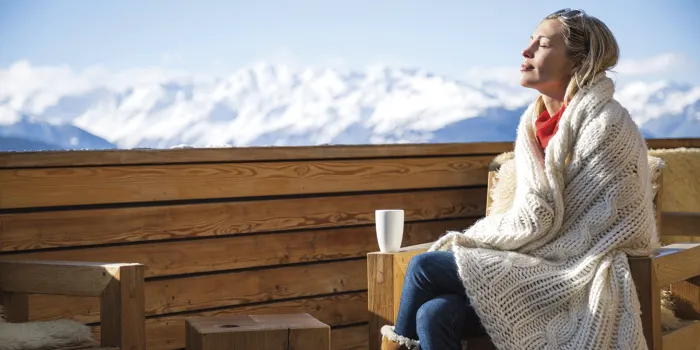If you feel blue during the winter, when the days are shorter and you’re exposed to less sunlight than at other times of the year, you aren’t alone: Some people are susceptible to seasonal affective disorder (SAD), a form of major depressive disorder that’s worse in colder, darker months and abates during warmer, sunnier seasons. The condition may make it harder to cope with your bleeding disorder or stay on top of your treatment plan.
“That could exacerbate having the ability and wherewithal to take care of yourself and to make sure you’re doing all the things that you need to do, making sure you’re going to your appointments or you’re taking your medication as it’s prescribed and you’re paying attention to any bleeds,” says Jessica Wulf, LMSW, a medical social worker at Western New York BloodCare in Buffalo, New York. “You need to make sure that you’re contacting your doctor and taking care of yourself.”
Because SAD is a part of depression, you may feel down or hopeless, lose interest in activities that you normally enjoy or have less energy than usual. You may also have SAD-specific symptoms, such as staying in bed more than usual, craving carbs, gaining weight and socializing less often.
“It’s easier to cancel plans and maybe not to commit to something because of the weather,” Wulf says. “I think it’s easier for people to say, ‘Oh, it’s such a bad day out’ or ‘With the weather, I don’t know if I should go.’”
What Are the Risk Factors for SAD?
Risk factors for SAD include a personal or family history of depression and living in a northern state, where winter nights are longer than in southern latitudes. “Especially in our area of western New York, there is a lot of snowfall or super cold temperatures or ice,” Wulf says. “It just makes it even that much harder physically and then mentally.”
If you’re feeling depressed this winter, tell your primary care doctor or a healthcare provider at your hemophilia treatment center (HTC). “If you have a really good relationship with your HTC nurse or the hematologist, don’t be afraid to start there,” Wulf says.
What Is the Best Treatment for SAD?
Standard treatments for SAD include medication, cognitive-behavioral therapy and light therapy. For light therapy to be effective, it’s important to use the light at the same time every morning (including weekends) within an hour of waking up. How far to sit from the light varies by product, so be sure to check the specifications. Light boxes cost $35 to $300.
Sometimes healthcare providers recommend vitamin D supplements, although more research is needed to show whether they are effective. Your doctor may also ask you to exercise regularly, which may boost your mood and minimize complications from your bleeding disorder.
“If you’re sitting at home and you’re sedentary, that can sometimes exacerbate joint issues,” Wulf says. “A lot of people here walk around malls or indoor places. (You’ll) have more energy and feel better about yourself.”

